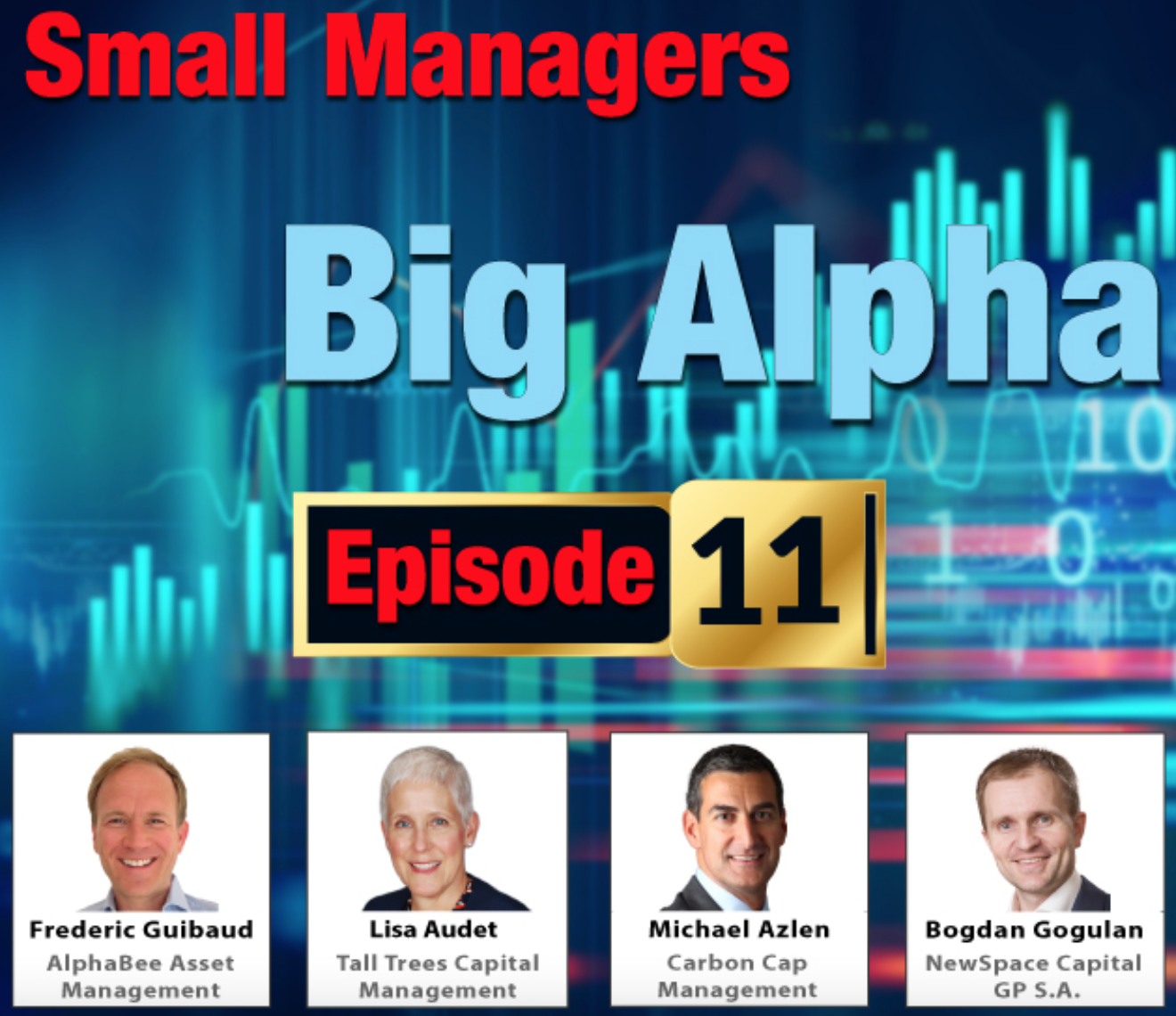|

B. G., Opalesque Geneva for New Managers: The purpose of carbon markets is to lower pollution by reducing the annual supply of allowances every year through 2030 - and so they are becoming an indispensable tool in the climate fight. There are several funds that invest exclusively in carbon markets, one of them being the World Carbon Fund, which claims to generate absolute returns in doing so. And this fund walks the walk as it is registered as an Article 9 fund and it has committed 20% of its performance fees to the purchase and cancellation of carbon allowances and offsets in order to have a direct impact on climate change. For those investors wishing to put their money into the cleaning of our planet and get returns that are uncorrelated to traditional and alternative asset classes in the process, carbon investing is not a bad way to go.
The World Carbon Fund (WCF) invests across several liquid and regulated carbon markets through two strategies: Core and Alpha. The Core Strategy generates returns from long and short positions in carbon markets. The Alpha Strategies generate returns from arbitrage, relative value and other short-term trading strategies. The fund currently invests globally in ETS in five regulated compliance carbon markets in Europe, California, RGGI, the UK and New Zealand.
According to documentation seen by Opalesque, the $205m fund, which began trading in February 2020, is up 1.23% YTD after a flat April and has returned 87% ITD with an annualised volatility of 6.4%.
It is managed by Michael Azlen, CEO and portfolio manager at London-based Carbon Cap Management LLP, which he founded in 2018. Azlen has more than 25 years of investment experience, including as the founder of the now-dissolved multi-asset and alternative investment firm Frontier Investment Management LLP, and has completed deep research into climate change and carbon as an asset class.
He will present his fund at the upcoming webinar, Small Managers - BIG ALPHA Episode 11, on Tuesday 13 June (details below).
In April, the fund's Core strategy protected the downside from falls in three carbon markets through short positions and the Alpha strategies made positive returns from some idiosyncratic trading strategies. "The Fund performance is +1.23% and this compares favourably to the average YTD performance across the five carbon markets of -8.1%," says the monthly report.
Carbon markets in a nutshell
Carbon markets are trading systems in which carbon credits are sold and bought. Companies or individuals can use carbon markets to compensate for their greenhouse gas emissions by purchasing carbon credits from entities that remove or reduce greenhouse gas emissions. One tradable carbon credit equals one tonne of carbon dioxide (or the equivalent amount of different greenhouse gas) reduced, sequestered or avoided.
One market is mandatory (or compliance), and the other is voluntary. The mandatory market dwarfs the voluntary carbon market (est. at over $1bn in 2021), with governments globally raising a record of over $63bn from the sale of carbon allowances in emission trading systems in 2022, reports Nasdaq.
Futures exchanges exist to facilitate transactions for spot and future deliveries of allowances. For example, more than 200,000 carbon offset futures contracts have traded at CME Group, the Chicago-based derivatives marketplace, since 2021, equating to 200 million metric tons of CO2 offsets.
73 instruments
A set of mandatory carbon markets is called Emissions Trading Systems or ETS. The European Union launched the world's first international ETS in 2005. In 2021, China launched the world's largest ETS, estimated to cover around one-seventh of global carbon emissions from the burning of fossil fuels. Many more national and subnational ETS are now operating or under development, says UNDP, a climate agency. Another market is the Clean Development Mechanism (CDM), adopted under the Kyoto Protocol in 1997, where emission-reduction projects in developing countries have generated carbon credits used by industrialized countries to meet part of their emission-reduction targets.
The World Bank recently reported that revenues from ETS have reached a record high, about $95bn. This is despite the challenging context for governments facing high inflation, fiscal pressures, and energy crises. A decade ago, only 7% of global emissions were covered by either a carbon tax or an ETS. Today, 23% of global greenhouse gas emissions are now covered by 73 instruments.
Article 9 for direct contribution
The World Carbon Fund is an Article 9 fund under the EU's SFDR. It seeks, through its investment activities, to contribute directly to the reduction of global CO2 emissions.
The European "Sustainable Finance Disclosure Regulation" (SFDR), which came into force in March 2021, aims to increase transparency for investors. Article 8 funds must declare that they take social and/or environmental criteria into account, and Article 9 funds must present a sustainable investment objective, contributing to an environmental or social objective, without causing significant harm to other environmental or social objectives, according to Carbone4.
Upcoming webinar:
Small Managers - BIG ALPHA Episode 11
Episode 11 of this ground-breaking live and interactive webinar series presents you with another carefully screened panel of investment managers worth taking a look at.
When: Tuesday, June 13 at 11 am ET (4 pm GMT, 5 pm CET)
Free registration here: www.opalesque.com/webinar/

Related articles:
29.Oct.2021 Opalesque Exclusive: World Carbon Fund outperforms as carbon markets heat up
01.Jul.2022 Opalesque Exclusive: Carbon markets provide opportunity despite volatility
|